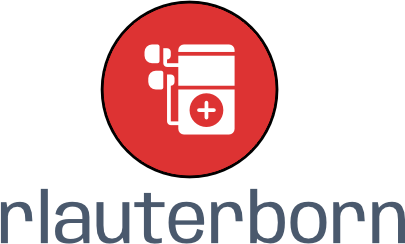Measuring the effectiveness of your public relations (PR) campaigns is crucial for understanding their impact and improving future efforts. A well-executed PR campaign should align with your objectives, generate positive media coverage, and influence public perception. Here’s a detailed guide on how to evaluate the success of your PR campaigns using various metrics and methods.


Set Clear Objectives and KPIs
Define Your Goals: Before launching a PR campaign, establish clear, measurable objectives. These goals might include increasing brand awareness, improving public perception, driving website traffic, or generating leads. Your objectives should be specific, measurable, achievable, relevant, and time-bound (SMART).
Identify Key Performance Indicators (KPIs): KPIs are metrics that directly relate to your campaign objectives. For example, if your goal is to increase brand awareness, relevant KPIs might include media mentions, social media reach, or website traffic.
Monitor Media Coverage
Media Mentions: Track the number and quality of media mentions your campaign receives. This includes print, online, and broadcast media. Analyze where your brand is being mentioned and in what context (positive, neutral, or negative).
Sentiment Analysis: Evaluate the sentiment of the media coverage to understand how your campaign is perceived. Sentiment analysis tools can help categorize mentions as positive, negative, or neutral, giving you insight into the public’s reaction to your campaign.
Share of Voice: Measure your brand’s share of voice compared to competitors. This metric shows how much of the media landscape your brand occupies and helps gauge the campaign’s visibility relative to others in the industry.
Earned Media Value (EMV): Calculate the EMV to estimate the financial value of your media coverage. EMV is often compared to the cost of paid advertising, giving you an idea of the ROI of your PR efforts.
Analyze Social Media Impact
Social Media Engagement: Track likes, shares, comments, and other forms of engagement on social media platforms. High engagement rates indicate that your content is resonating with your audience.
Follower Growth: Monitor changes in your social media followers during and after the campaign. A significant increase in followers suggests that your campaign is driving interest in your brand.
Hashtag Performance: If your campaign includes specific hashtags, track their usage and reach. Analyzing hashtag performance helps you understand how widely your message is spreading on social media.
Social Listening: Use social listening tools to monitor conversations about your brand and campaign across social media. This provides insights into public opinion and identifies emerging trends or potential issues.
Evaluate Website Traffic and Conversions
Website Traffic: Measure the increase in website traffic that can be attributed to your PR campaign. Use tools like Google Analytics to track referral traffic from media outlets, social media, and other sources.
Conversion Rate: Assess the number of visitors who take a desired action on your website, such as signing up for a newsletter, downloading a resource, or making a purchase. A higher conversion rate indicates that your PR campaign is driving valuable actions.
Bounce Rate: Analyze the bounce rate to see how engaged visitors are with your website. A low bounce rate suggests that the content or landing page linked to your PR efforts is relevant and engaging.
Time on Site: Measure the average time visitors spend on your site. Longer time on site can indicate that the content is resonating with the audience and holding their interest.
Assess Audience Reach and Awareness
Impressions and Reach: Calculate the total number of impressions (how many times your content was seen) and reach (the number of unique people who saw it) across all channels. This helps measure the campaign’s overall visibility.
Brand Awareness Surveys: Conduct pre- and post-campaign surveys to gauge changes in brand awareness. These surveys can reveal shifts in public knowledge or perception of your brand as a result of the campaign.
Audience Demographics: Analyze the demographics of your audience before and after the campaign. Understanding who you are reaching can help refine future campaigns to better target your desired audience.
Measure Lead Generation and Sales Impact
Lead Generation: Track the number of leads generated during the campaign. This could include sign-ups, inquiries, or other forms of lead capture. Comparing these figures to your baseline data can help determine the campaign’s effectiveness.
Sales Growth: If applicable, measure the direct impact of your PR campaign on sales. This could involve tracking promotional code usage, direct sales inquiries, or overall sales growth during the campaign period.
Customer Acquisition Cost (CAC): Calculate the cost of acquiring new customers through your PR efforts. Compare the CAC to other marketing channels to assess the cost-effectiveness of your PR campaign.
Gather and Analyze Qualitative Feedback
Media Interviews and Journalist Feedback: After interviews or media coverage, follow up with journalists to gather their impressions. Their feedback can provide valuable insights into how your message was received and any areas for improvement.
Customer and Stakeholder Feedback: Collect feedback from customers, partners, and other stakeholders on how they perceived the campaign. This qualitative data can complement quantitative metrics and offer deeper insights.
Internal Team Reviews: Conduct debriefs with your PR team to discuss what worked well and what didn’t. This internal analysis can highlight strengths and weaknesses in your approach, informing future campaigns.
Calculate Return on Investment (ROI)
Cost vs. Benefit Analysis: Compare the costs of running your PR campaign (including staff time, agency fees, and resources) to the benefits achieved (media coverage, lead generation, sales). This analysis helps determine the overall ROI.
Long-Term Impact: Consider the long-term effects of the campaign, such as sustained brand awareness or ongoing media relationships. Some PR benefits may not be immediately measurable but can contribute to long-term success.
Conclusion
Measuring the effectiveness of your PR campaigns requires a combination of quantitative and qualitative methods. By setting clear objectives, monitoring media coverage, analyzing social media impact, and evaluating lead generation and sales, you can gain a comprehensive understanding of your campaign’s success. Regularly assessing these metrics not only helps in demonstrating the value of your PR efforts but also in refining strategies for future campaigns.




